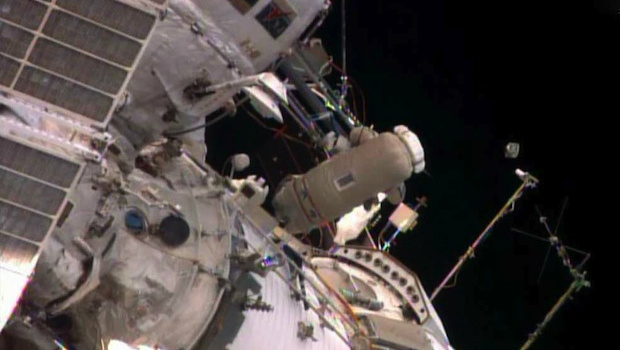Two Russian cosmonauts have released a nanosatellite that will take images of Earth.
The two Expedition 40 spacewalkers – Alexander Skvortsov and Oleg Artemyev – undertook a 6.5 hour operation at the International Space Station.
Artemyev deployed a Peruvian nanosatellite, which is designed to take pictures of Earth with a pair of cameras and then transmit the images to a ground station, according to NASA. The deployment is to aid the National University of Engineering in Peru in its efforts to gain experience and test technology related to nanosatellites.
NASA, along with various universities, has been increasingly working on building and launching nanosatellites, which can be the size of a shoebox and are cheaper and easier to launch than regular, full-size satellites.
Last autumn, NASA and the US Air Force launched a Minotaur 1 rocket carrying 28 satellites that measure about 4″ on each side and weigh less than 3lbs. The satellites, dubbed CubeSats, were built by scientists and engineers from various organisations and universities, including NASA, Vermont Technical College, University of Kentucky and University of Louisiana at Lafayette.
Earlier this year, scientists at the Lawrence Livermore National Laboratory reported that they are working on nanosatellites designed to act like traffic police in space.
Researchers are hoping that dozens of the satellites in low-Earth orbit will prevent major satellites from colliding with each other or with space debris by relaying information to satellite operators on the ground.
During their spacewalk, the cosmonauts inspected components on the outside of the orbiting station, as well as retrieve and install scientific experiments.
The cosmonauts brought in several experiments that were designed to find out how various materials are affected by the harsh environment of space. They also installed two astrobiology studies on the outside of the station that will focus on organisms that are tolerant of environmental extremes. Scientists are hoping the results will help them figure out life-detection strategies for future robotic exploration of Mars.
The spacewalk was the 181st in the history of the space station.
Computerworld








Subscribers 0
Fans 0
Followers 0
Followers